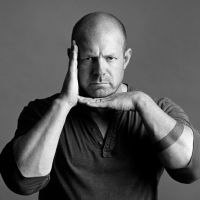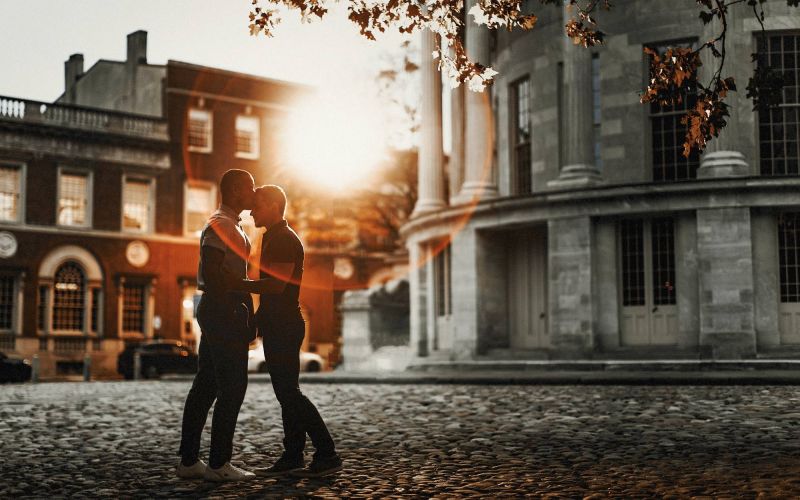
Capturing the beauty of lens flares is a popular technique in photography and cinematography. However, sometimes the desired flare effect is not achieved due to unfavorable lighting conditions or the absence of the sun. In such cases, photographers and filmmakers can resort to creating fake flares with a camera flash. This technique allows for creative control and enables the artist to add a dynamic element to the scene, enhancing its visual impact. In this guide, we will explore the process of creating fake flares with a camera flash, step by step, to achieve stunning results in your photography or filmmaking projects.
Video Tutorial | 3 tips on Creating Lens Flare with No Sun
In this video, I show you how to accomplish this look using just one off-camera flash to create a unique lens flare. It took a lot of playing around with different setups to get a very natural-looking lens flare but once I did it became a technique that I was able to reproduce quickly on shoots and at weddings. You can watch the full tutorial here:
Tips for Capturing Fake Flares with Flash and No Sun
The reason for coming up with the technique is simple: I began having a lot of clients request lens flare in their photos. Often times we are tasked to create or emulate sunlight when it doesn’t exist primarily because clients want a certain look, so I wanted to find a way to give them what they wanted without adding it in later in post.
Here are important tips on creating a very natural looking lens flare.
1. Use The Right Lens When Capturing Flares (Real or Fake)

Find a lens with good flare qualities by testing it in natural sunlight and spend time getting to know how to not only produce lens flare but also how to control it. Most newer lenses, lenses manufactured in the past 5 years or so, typically have coatings on the front element to prevent lens flare, but you’ll find that older, manual focus lenses will yield perfect flare qualities. Three of my favorite lenses for producing unique and artistic lens flares are:
- Leica 50mm Summilux f/1.4 ASPH (my personal favorite)
- Voigtlander 35mm f/1.4 Nokton Classic
- Canon 50mm f/1.2L
2. Learn To Control Fake Flare
Once you have a lens that can create artistic lens flare, the next step is learning how to control it. You want to be able to use it in a way that makes a good image more interesting and powerful. I’ve seen so many photos where the lens flare doesn’t add anything to the image and the photographer relies on the flare to make an average photo look interesting. My goal is to always enhance an image with the addition of lens flare to support the existing artistic attributes of the photo. More often than not, I use lens flare to help draw the viewers attention into exactly where I want it to be.
I know that if I shoot the Leica 50mm Summilux wide open at f/1.4, it will create a very pronounced line in a circle or rainbow-colored streaks that will also wrap around in a distinct circular look.
If I close down the aperture and go anywhere above f/5.6 it will start to produce sun stars. I love the look of the lens flare that the Summilux produces when shot wide open so anytime that I’m intentionally trying to produce flare I shoot with the lens wide open.
3. Make the Fake Flare Look Natural, Even Though It’s Fake
Once my clients began expressing their love for the photos that they’ve seen of mine with lens flare, I started playing around with reproducing the same look using off-camera flash. The biggest challenge I ran into was making it look as natural as possible. I’ve personally found that lenses that produce good fake flare often do so when the sun is at its brightest and just slightly above the subject.
To reproduce this look, using a regular flash requires a decent amount of power. As you can see in the video, I’ve found that a 200 w/s strobe yields the best results, and typically I’m firing it at ½ power. Sure, I could use a regular flash but I would quickly run into recycle issues since typical pocket flashes only produce 50-75 w/s of power. I’ve also found that using a MagGrid reduces the light spill and creates a small source of light similar to how the sun’s rays hit the lens. I pair this with a full CTO (color temperature orange) MagGel to match the color of the sun during golden hour. The other thing to remember when it comes to making fake flare look natural when using artificial light is to match the location of where the sun would actually be.
You can’t be shooting in the city and set the flash up to fire with a building directly behind it. When shooting in the city I like to find gaps in between the buildings where the sun would naturally be shining through had it not been cloudy or already set.
4. Live View Helps You Visualize the Fake Flare
The last tip, and probably the most important, is to use Live View when shooting. Using LV when creating lens flare with real sunlight will allow you to see how the lens flare will look before you press the shutter giving you more control. It also allows you to take a shot and immediately see the results so that you can make a quick adjustment to get the flare where you want it. You’ll hear my shutter firing away at a few points in the video, I’m basically watching how the lens flare looks and adjusting the angle of my lens to get the flare exactly where I want it.
5. Enhance Fake Flares in Lightroom or Photoshop
Cloudy days don’t have to ruin your shoot if you’re hoping to capture sun flares. By strategically placing and using flashes, you can recreate sun flares and enhance them in post.
If you add flare to one image, be sure to do so for all of the images in that scene; otherwise, the image with fake flare will not match the rest of the images. Do it for the scene, or don’t do it at all.
Our approach to enhance fake flares:
- Expose for ambient light
- Find light direction
- Place flash to follow light direction
- Add a flash gel (CTO is optional)
- Set flash power (typically to 1/1)
- Angle flash to shoot towards lens
Exposure goals for enhancing fake flares:
- Maximum dynamic range
- Bias: Preserve shadows
Conclusion
That’s it, nothing too complicated other than finding a good lens that creates realistic looking fake flare with natural sunlight and learning how to reproduce that same look with a one-light setup. I totally understand that this type of look isn’t for everyone and I know there are a lot of photographers who do everything they can to avoid getting lens flare in their photos, I get it. I nailed down the one light setup for producing lens flare once I got tired of explaining to my clients who did like it that I wasn’t able to give them that look on overcast and cloudy days. Just like anything else it comes down to repetition and practice to make it look convincing. You can see more of my work on my Website and Instagram.










Get Connected!